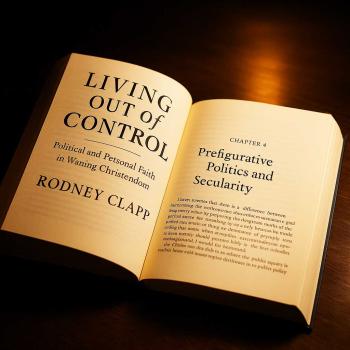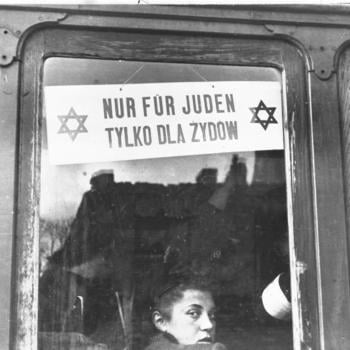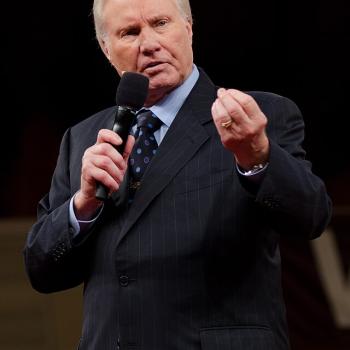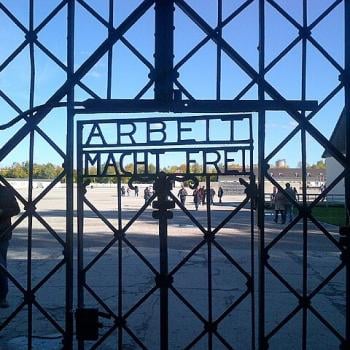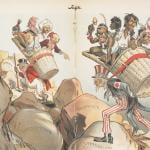No adequate definition of a religious movement can be only one paragraph. I tried that with Pietism in a previous post and some rightly objected. However, I stand by it as a minor definition that, of course, needs fleshing out.
One person rightly noted that my definition of Pietism could apply to most American Christianity! I responded that I agree which just shows how widespread Pietism is. It came across the Atlantic, too deep root in American soil, and flourished here. In some ways it is THE grassroots religion, the “folk religion” (to use a sociologists’ category without any intention of value judgment) of America.
Here is how Phyllis Tickle puts it: “to meet the Pietists is to come home to what spawned not only many of us as religious believers, but almost all of us as citizens of contemporary America.” (Foreword to The Pietists [HarperSanFrancisco, 2007], p. ix)
Tickle rightly argues that the initial movement called Pietism was relatively restricted geographically and historically. I lasted only about 50 to 100 years depending on how one categorizes its formulators. Most scholars date the beginning of Pietism as a particular movement (before it simply melted into the mainstream of Protestantism especially in America) to 1666 or 1675–two important dates in the life and ministry of Philipp Jakob Spener (1635-1705) who is generally credited with being the founder of the Pietist movement. 1666 was the year he began his conventicles/collegia pietatis/covenant groups in his Frankfurt, Germany Lutheran congregation. These were for lay study of Scripture and prayer and did not absolutely require the presence of clergy. (Spener himself preferred that a clergyperson be present if possible and the laws of his part of Germany seemed to mandate that. It was then against the law in much of Europe to study the Bible in groups without the benefit of clergy which is why many Pietists left Germany and Scandinavia and emigrated to America.)
1675 was the publication year of Spener’s groundbreaking books Pia Desideria and Allgemeine Gottesgelehrtheit (loosly translated General Theology or General Teachings about God). These, especially Pia Desideria, launched the Pietist movement beyond Frankfurt. But Pia Desideria was written simply as an introduction and commentary on an earlier work by Protestant mystic Johann Arndt entitled True Christianity. Some consider that book the real founding document of Pietism.
Spender’s pupil August Hermann Francke developed Pietism organizationally by founding the so-called Halle Institutions–a university, a religious academy, an orphanage, a missions agency, a publishing house, a hospital, etc. Francke also emphasized (even more than Spener) the absolute necessity of a “born again experience” (which he called Busskampf) for authentic Christian faith and life. Other early Pietist leaders included the Moravian leader Nicholas Ludwig, Count von Zinzendorf, Gerhard Tersteegan, Gottfried Arnold and Johann Anastasius Freylinghausen.
What did these early Pietist leaders have in common that made their movement distinct? There are a few things everyone agrees on: 1) an emphasis on experience of God over a merely sacramental spirituality or orthodoxy, 2) promotion of lay involvement in small groups for Scripture reading and spiritual formation, 3) an emphasis on personal piety and holiness alongside justification (so, regeneration and sanctification which they believed were neglected by the orthodox state churches of their time). There are some other “hallmarks” of early Pietism that are a bit more controversial; perhaps not every Pietist leader emphasized these in the same way or to the same extent, but they came to be associated with the Pietist movement and not only by its enemies: 1) emphasis on an “open Bible”–Scripture to be read and interpreted by all Christians (something largely forbidden by the elite of the state churches), 2) belief in and promotion of emotional experiences of God that are life-transforming, 3) Jesus-centered conversional piety (the state churches did not talk as much about Jesus as a personal friend), 4) eschatological fervor (many of the Pietists became premillennialists which was rare and considered heterodox if not heretical by “orthodox” leaders of the state churches.
The above mentioned Pietist leaders traveled around Europe and Great Britain creating networks of Pietist congregations and conventicles some of which evolved into separate denominations–often persecuted by the state churches in Europe. The Church of the Brethren (German Baptist Brethren) began as a Pietist network that rejected infant baptism. Many, certainly not all, Pietists became Baptists of some sort. Most of those emigrated to America to find freedom of worship.
One has to distinguish between “types” of early Pietism. (Later Pietism fragmented into numerous types but that’s a subject for a later post.) Some early Pietists found kindred spirit with the Spiritualists and Inspirationists of the Radical Reformation such as Caspar Schwenkfeld (who also inspired the Quakers in England). These “radical Pietists” tended to reject formal church life and emphasis individual spirituality often blending into that aspects of esotericism drawn from (for example) Protestant mystic Jakob Boehme. Other Pietists were somewhat appalled by these radical, separatist Pietists and considered them their movement’s lunatic fringe. Spener, Francke and Zinzendorf, for example, tried to persuade them to come back into the “church Pietism” fold that practiced sacraments and had ordained ministers and liturgical worship. So two categories of early Pietism that are generally distinguished by scholars are “church Pietism” and “radical Pietism.” But all scholars agree the overlap between them was significant.
I argue for a third type of Pietism in the early formation and development of the movement that is probably most influential on American Christianity–evangelical sectarian Pietism. By “evangelical” I mean dedicated to missions and evangelism (inspired by the Moravians and Wesley) and by “sectarian” not part of any state church or even informally established denomination with culture-shaping power (to borrow on Ernst Troeltsch’s typology of “church-type” and “sect-type” denominations). Among these are many Pietist Baptist groups (most of them rooted in German and Scandinavian Pietism) and the so-called “Free Churches” that are not Baptist per se–The Evangelical Free Church of America, the Evangelical Covenant Church of America, various small Brethren Churches, etc. Although many of these denominations began in Europe they were transported to America where they really “took off.” Even though they early rejected the role of culture-shaping denominations (such as the Episcopal Church) their influence has been great in American religious life.
To be continued….



